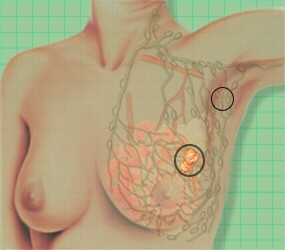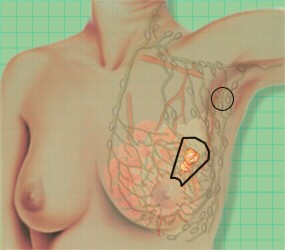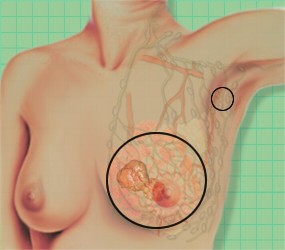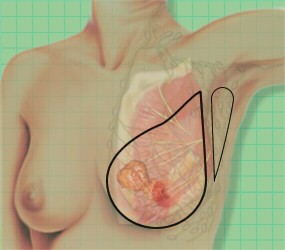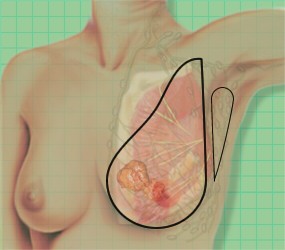|
History
|
|
|
Surgery
is the oldest form of cancer treatment.
Although it remains an important part
of cancer treatment today, surgery is
now combined with the other treatments
mentioned above to achieve maximum success.
|
There
are two main types of surgeries for breast cancer,
breast conservation surgery and mastectomy.
With breast conserving surgeries the surgeon tries
to spare and preserve as much of the breast as possible.
With a mastectomy the entire breast is removed.
|
Breast Conservation
Surgery
|
|
Breast
Conservation Requires
Three Steps:
- Lumpectomy
- Axillary
Lymph Node Dissection
- Radiation
Removal
of the lesion with a 1 cm margin of normal
breast tissue. Axillary node dissection is
performed through a separate incision. Radiation
is required to achieve the same survival rates
as modified radical mastectomy.
|
Contraindications
for Breast Conservation
- Large
tumor in a relatively small breast
- Subareola
tumor
- Marked
adjacent intraductal component
- Inadequate
radiotherapy support
- Patient
desires mastectomy
- Large
axillary nodes
- Multifocal
disease
- Multiple
areas of suspicious calcifications on
mammogram
|
|
Lumpectomy
|
|
|
There
are two types of breast conserving surgeries,
which are usually followed by radiation therapy:
This
procedure spares most of the breast. Only
the cancerous lump and a small margin of normal
breast tissue are removed. This is followed
by a second procedure to remove some of the
lymph nodes under the arm, a method called
axillary node dissection. Examination of these
lymph nodes helps to stage the disease, as
node negative or node positive.
|
|
Segmental Mastectomy
|
|
|
The
surgeon removes the cancer, some of the surrounding
breast tissue, the lining over the chest muscles
below the cancer, and usually some lymph nodes
under the arm.
|
|
Simple or Total
Mastectomy
|
|
|
The
entire breast is removed, but no lymph nodes
or muscle are removed. This treatment may
be appropriate for noninvasive or intraductal
carcinoma which seldom spreads to the lymph
nodes.
|
|
Modified Radical
Mastectomy
|
|
|
This
procedure entails removal of the breast and
some of the lymph nodes from under the arm
leaving the chest muscles intact.
|
|
Radical Mastectomy
|
|
|
Rarely
used now, this former standard treatment included
removal of the breast, the lymph nodes in
the armpit, the chest wall muscles and other
lymph nodes. New, less dramatic strategies
have been successful.
|
-- layered composites (c) L. Van Warren and Marilyn Fulper
|
Other Surgery
Sites
|
|
These
other sites have surveyed surgical treatment
of breast cancer.
|
|

